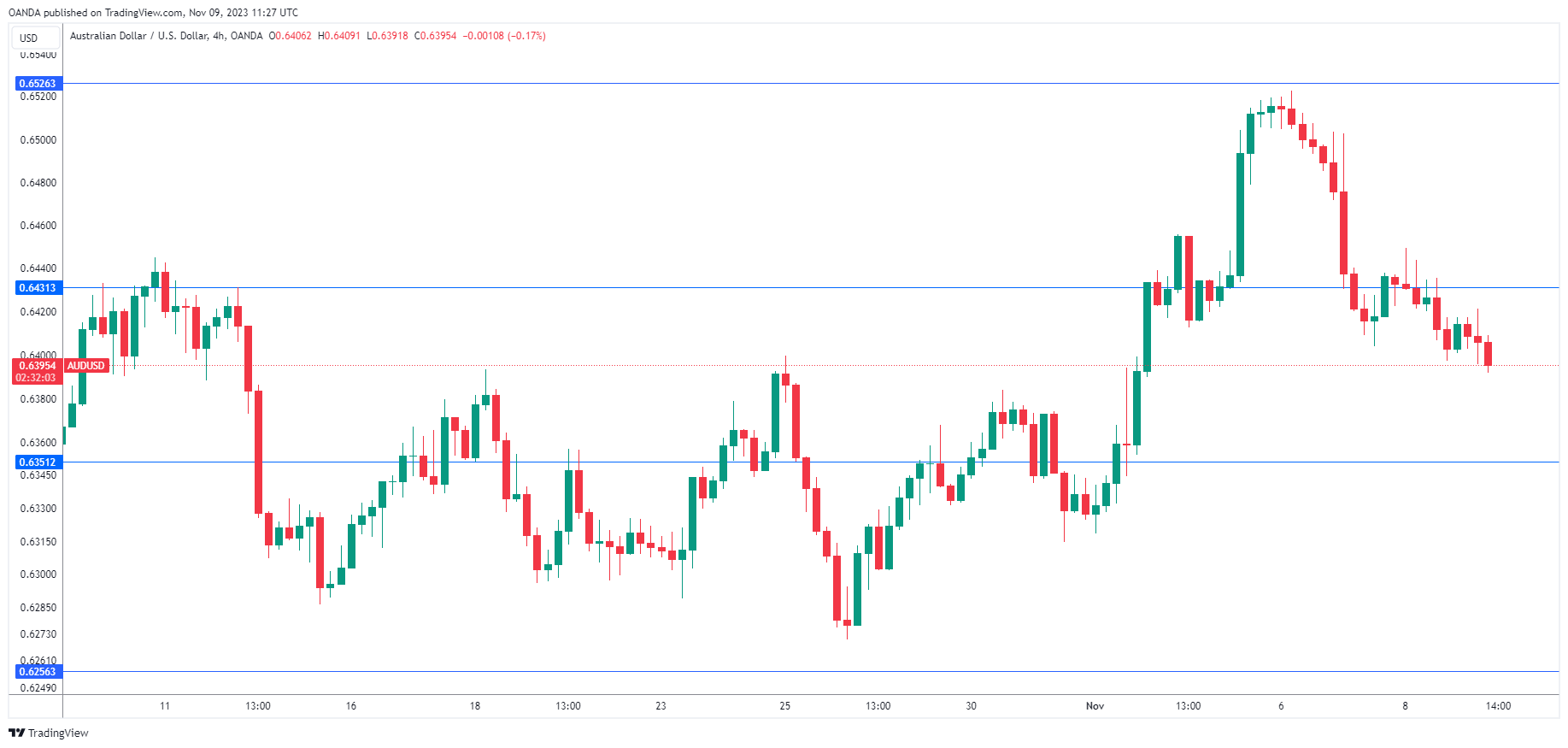- China’s inflation misses estimate
- RBA to release monetary policy statement on Friday
The Australian dollar is unchanged on Thursday and is trading at 0.6401. This follows a three-day slide, in which AUD/USD has fallen 1.7%.
RBA Monetary Policy Statement Eyed
The Reserve Bank of Australia will release its quarterly monetary policy statement on Friday. Investors will be looking for insights about the RBA’s rate policy, after the central bank increased rates on Tuesday by a quarter point to 4.35%, a 12-year high. It was the first rate hike by Governor Michelle Bullock and came after four consecutive pauses.
The RBA statement after the meeting noted that inflation remained too high and “the risk of inflation remaining higher had increased”, but investors focused on the fact that the statement did not mention that further tightening might be required, unlike the October statement. This raised expectations that the RBA is done with tightening and the Australian dollar plunged over 1% in the aftermath of the rate hike.
The markets will now focus on third-quarter wage growth, which will be released on 15 November. If wages rise sharply, we will likely see an increase in the odds of a second straight hike at the RBA’s next meeting on 5 December.
The Australian dollar is sensitive to Chinese data, as China is Australia’s largest trading partner. Inflation in China fell by 0.2% y/y in October, down from 0.0% in September and lower than the market consensus of -0.1%. Monthly, CPI declined by 0.2%, versus a 0.2% rise in September and below the market consensus of 0.0%. The downturn in inflation was driven by a sharp decline in the price of pork, as supply has outstripped demand.
The sharp slowdown in China has resulted in persistent disinflation and further support measures will be needed to avoid a downturn in inflation expectations that could dampen consumer spending.
AUD/USD Technical
- There is resistance at 0.6431 and 0.6526
- 0.6351 and 0.6256 are providing support


